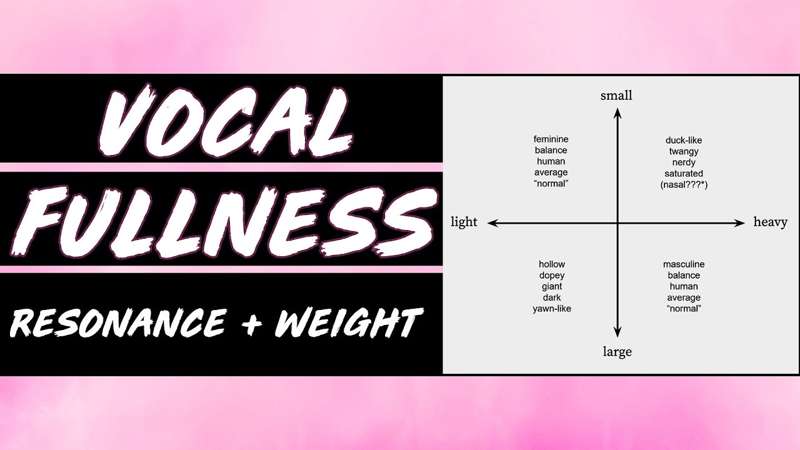Vocal Fullness - Is Your Voice Too Buzzy or Too Hollow? (Patreon)
Content
Vocal Fullness is a pedagogical concept developed by Clover and I to describe the relationship between resonance and weight. It's a perceived sense of "saturation" or "fullness". Understanding how to listen for Fullness is extremely useful. It allows you to determine if your general issue is resonance or sound production.
Fullness is the perceptual description of how vocal weight and size interact with each other. As weight and size change, the texture and density of the voice changes in a profound way. Fullness can be thought of as the balance or imbalance of weight and size. To help simplify this relationship, we will identify three key sound qualities: sufficiently full, underfull, and overfull.
The larger the size, the more weight is needed to create an equally Full sound. The inverse is also true, the smaller the size, the less weight is needed to create an equally full sound. If those balanced relationships such as heavy—large or light—small deviate, the imbalanced qualities, Underfull and Overfull emerge. Underfull and Overfull represent imbalance between weight and size. Overfull is a harsh, saturated, twangy sound formed by a heavy—small relationship. Underfull, on the other hand, is a hollow, dull, empty sound formed by a light—large relationship.
One of the most common issues in transvoice is a lack of balance between weight and size. This creates an atypical sound of clashing vocal sex / gender features. We often hear FtM voices which tend to be a bit "buzzier" than average. This relationship is created when a transmasculine voice has enough weight but too small a vocal tract (thus too high of resonance). The resultant balance is that of Overfull, which can be dysphoria inducing for transmen. Conversely, in fem voice modification, we tend to see voices either ending up too buzzy or too hollow (Overfull or Underfull).
Full:
- sounds average, human, typical, “normal”, and regular
- occurs when weight and size are balance
- has an “unaffected” quality to it
- sufficient fullness is responsible for typical masculine and feminine voices
Overfull:
- sounds twangy, gnome-like, duck-like, metallic, and bright
- occurs when weight is heavy for the relatively smaller size
- often described as buzzy, “nerdy”, or agitated
Underfull:
- sounds goofy, hollow, dark
- occurs when weight is too heavy for the relatively smaller size
- often described as yawn-like, dopey, or round
